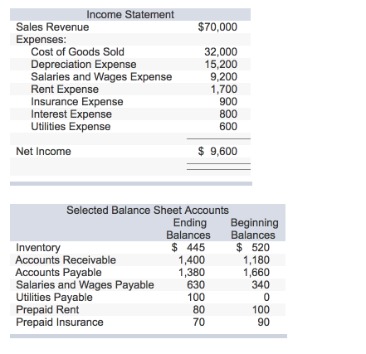
Give each partner a schedule that shows the amounts to be reported on the partner’s Form 4684, Section B, Part II, line 34, columns (b)(i), (b)(ii), and (c). Attach a statement to the Schedule K-1 identifying the dividends included in box 6a or box 6b that are eligible for the deduction for dividends received under section 243(a), (b), or (c); section 245; or section 245A; or are hybrid dividends as defined in section 245A(e)(4). An item is specially allocated if it’s allocated to a partner in a ratio different from the ratio for sharing income or loss generally. If there is a decrease in the partner’s share of profits, losses, or capital, indicate whether it was due to a sale or an exchange. The partnership can truncate a partner’s identifying number on the Schedule K-1 the partnership sends to the partner.
Instructions for Form 1065 – Additional Material
- A designation for a partnership tax year remains in effect until the designation is terminated by (a) a valid resignation of the PR or DI, (b) a valid revocation of the PR (with designation of successor PR), or (c) a determination by the IRS that the designation isn’t in effect.
- If the partnership had gain from certain constructive ownership transactions, each partner’s tax liability must be increased by the partner’s distributive share of interest due on any deferral of gain recognition.
- Limited partners treat as self-employment earnings only guaranteed payments for services they actually rendered to, or on behalf of, the partnership to the extent that those payments are payment for those services.
- The balance at the end of the year should equal the total of the amounts reported as the partners’ ending capital accounts in item L of all the partners’ Schedules K-1.
Instructions have been updated for section 453A information required to be provided to partners. Mastering the complexities of Form 1065 is essential for partnership success. By unraveling its intricacies, you can confidently provide the IRS with crucial financial information. Recent revisions have seen some alterations too, hence understanding them becomes vital while preparing a return. One such significant modification observed is Code J – the rules of working with cash flow statement Other Deductions, with new subcodes introduced in Section A deductions. Remember the location where to send varies depending on whether including payment alongside submission; refer directly to the official instructions provided by the IRS for further guidance regarding shipping options suitable for securely sending sensitive documents like these returns.
How to File Form 1065

Include on this line the interest properly allocable to debt on property held for investment purposes. Property held for investment includes property that produces income (unless derived in the ordinary course of a trade or business) from interest, dividends, annuities, or royalties; and gains from the disposition of property that produces those types of income or is held for investment. If cancellation of debt is reported to the partnership on Form 1099-C, report each partner’s distributive share in box 11 using code E.
Partnerships that qualify to use the nonaccrual-experience method (described earlier) should attach a statement showing total gross receipts, the amount not accrued as a result of the application of section 448(d)(5), and the net amount accrued. See Deductions , later, for information on how to report expenses related to tax-exempt income. Generally, the partnership must provide certain information to the partner if the partnership knows, or has reason to know, the following.
The partnership must also provide a description of the aggregated trade or business and an explanation of the factors met that allow the aggregation. In Year 1, a partnership borrows $1,000 (PS Liability 1) from what is a good inventory turnover ratio Bank 1 and $1,000 (PS Liability 2) from Bank 2. A partner guarantees payment of up to $500 of PS Liability 1 if any amount of the full $1,000 isn’t recovered by Bank 1 and lends $200 to the partnership, and a person related to the partner guarantees payment of the entire amount of PS Liability 2 of $1,000. The partnership enters $1,700 as the ending balance of the partner’s share of recourse liabilities on item K1 of the Schedule K-1 for tax Year 1.
A partnership that receives any tax-exempt income other than interest, or holds any property or engages in any activity that produces tax-exempt income, reports this income on Schedule K, line 18b, and in box 18 of Schedule K-1 using code B. However, if the adjusted basis of the contributed property exceeds its FMV at the time of the contribution, the built-in loss can only be taken into account by the contributing partner. For all other partners, the basis of the property in the hands of the partnership is treated as equal to its FMV at the time of the contribution (see section 704(c)(1)(C)). Use Form 8832, Entity Classification Election, to make a change in classification.
Filing Deadline for Form 1065: U.S. Return of Partnership Income?
Generally, a partnership doesn’t pay tax on its income but passes through any profits or losses to its partners. Partners must include partnership items on their tax or information returns. Beginning January 1, 2024, partnerships are required to file Form 1065 and related forms and schedules electronically if they file 10 or more returns of any type during the tax year, including information, income tax, employment tax, and excise tax returns.
Enter amount of deductions related to portfolio income which were formerly deductible by individuals under section 67 subject to the 2% AGI floor. For partners other than individuals, amounts that are clearly and directly allocable to portfolio income (other than investment interest expense and section 212 expenses from a REMIC) can be deducted on those partners’ income tax returns. For partnerships other than PTPs, report the partner’s share of net positive income resulting from all section 743(b) adjustments. For purposes of code F, net positive income from all section 743(b) adjustments means the excess of all section 743(b) adjustments allocated to the partner that increase the partner’s taxable income over all section 743(b) adjustments that decrease the partner’s taxable income. Attach a statement to line 20, code U, showing each section 743(b) basis adjustment making up the total and identify the assets to which it relates. Generally, amounts reported on line 4a as guaranteed payment for services and line 4b as guaranteed payment for the use of capital aren’t considered to be related to a passive activity.
If the partnership doesn’t prepare non-tax-basis financial statements, Schedule L must be based on the partnership’s books and records and may show tax-basis balance sheet amounts if the partnership’s books and records reflect only tax-basis amounts. Gain from the mark-to-market election is relevant for partners to figure the NIIT. See the instructions regarding net investment income (code Y), earlier. For partnerships other than PTPs, if a partner’s taxable income or loss on any line item on Schedule K-1 (Form 1065) includes an allocation of any income or deduction item determined by applying section 704(c), include the sum of such income and deduction items here. The partnership (including PTPs) must first determine if it’s engaged in one or more trades or businesses.
Online Filing Service
On, Schedule-M2, you’ll inform the IRS of any changes to you or your partner’s capital accounts (or your equity). Make sure these amounts equal the total amounts you reported depreciation conventions on item L of every partner’s Schedule K-1. You won’t have to fill out Schedule M-2 if you answered “yes,” to all four questions in part 6 of Schedule B.

Leave a Reply